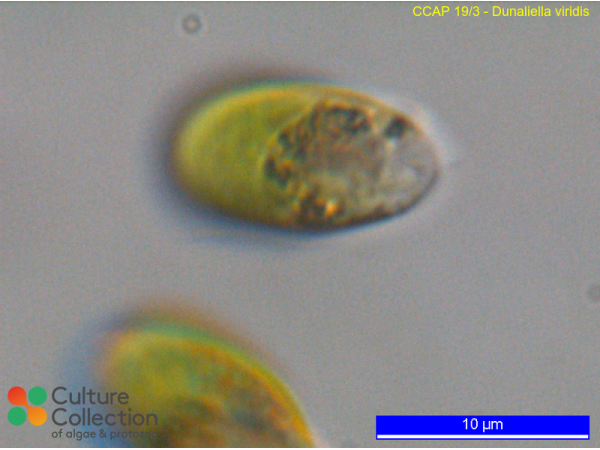References [ 17 ]
Eddy BP (1956) The suitability of some algae for mass cultivation for food, with special reference to Dunaliella bioculata. Journal of Experimental Botany 21: 372-380.
Hejazi MA, Barzegari A, Gharajeh NH & Hejazi MS (2010) Introduction of a novel 18S rDNA gene arrangement along with distinct ITS region in the saline water microalga Dunaliella. Saline Systems 6: 4.
Borowitzka MA & Siva CJ (2007) The taxonomy of the genus Dunaliella (Chlorophyta, Dunaliellales) with emphasis on the marine and halophilic species. Journal of Applied Phycology 19: 567-590.
Assuncao P, Jaen-Molina R, Caujape-Castells J, de la Jara A, Carmona L, Freijanes K & Mendoza H (2011) Phylogenetic position of Dunaliella acidophila (Chlorophyceae) based on ITS and rbcL sequences. Journal of Applied Phycology 24: 635-639.
Santin-Montanya I, Sandin-Espana P, Garcia Baudin JM & Coll-Morales J (2007) Optimal growth of Dunaliella primolecta in axenic conditions to assay herbicides. Chemosphere 66: 1315-1322.
Cifuentes AS, Gonzalez MA, Inostroza I & Aguilera A (2001) Reappraisal of physiological attributes of nine strains of Dunaliella (Chlorophyceae): Growth and pigment content across a salinity gradient. Journal of Phycology 37: 334-344.
DOI: none
Gonzalez MA, Coleman AW, Gomez PI & Montoya R (2001) Phylogenetic relationship among various strains of Dunaliella (Chlorophyceae) based on nuclear ITS rDNA sequences. Journal of Phycology 37: 604-611.
DOI: none
Talebi AF, Mohtashami SK, Tabatabaei M, Tohidfar M, Bagheri A, Zeinalabedini M, Mirzaei HH, Mirzajanzadeh M, Shafaroudi SM & Bakhtiari S (2013) Fatty acids profiling: A selective criterion for screening microalgae strains for biodiesel production. Algal Research 2: 258-267.
Wang WC, Allen E, Campos AA, Killens Cade R, Dean L, Dvora M, Immer JG, Mixson S, Srirangan S, Sauer ML, Schreck S, Sun K, Thapaliya N, Wilson C, Burkholder J, Grunden AM, Lamb HH, Sederoff H, Stikeleather LF & Roberts WL (2013) ASI: Dunaliella marine microalgae to drop-in replacement liquid transportation fuel. Environmental Progress & Sustainable Energy 32: 916-925.
Assuncao P, Jaen-Molina R, Caujape-Castells J, Wolf M, Buchheim MA, de la Jara A, Freijanes K, Carmona L & Mendoza H (2013) Phylogenetic analysis of ITS2 sequences suggests the taxonomic re-structuring of Dunaliella viridis (Chlorophyceae, Dunaliellales). Phycological Research 61: 81-88.
Assuncao P, Jaen-Molina R, Caujape-Castells J, de la Jara A, Carmona L, Freijanes K & Mendoza H (2012) Molecular taxonomy of Dunaliella (Chlorophyceae), with a special focus on D. salina: ITS2 sequences revisited with an extensive geographical sampling. Aquatic Biosystems 8: 2.
DOI: none
Emami K, Hack E, Nelson A, Brain CM, Lyne FM, Mesbahi E, Day JG & Caldwell GS (2015) Proteomic-based biotyping reveals hidden diversity within a microalgae culture collection: An example using Dunaliella. Scientific Reports 5: 10036.
Beuzenberg V, Smith KF & Packer MA (2014) Isolation and characterisation of halo-tolerant Dunaliella strains from Lake Grassmere/Kapara Te Hau, New Zealand. New Zealand Journal of Botany 52: 136-152.
Mixson Byrd S, Burkholder JM & Zimba PV (2017) Environmental stressors and lipid production by Dunaliella spp. I. Salinity. Journal of Experimental Marine Biology and Ecology 487: 18-32.
Fang L, Qi S, Xu Z, Wang W, He J, Chen X & Liu J (2017) De novo transcriptomic profiling of Dunaliella salina reveals concordant flows of glycerol metabolic pathways upon reciprocal salinity changes. Algal Research 23: 135-149.
Henley WJ, Cobbs M, Novoveská L & Buchheim MA (2018) Phylogenetic analysis of Dunaliella (Chlorophyta) emphasizing new benthic and supralittoral isolates from Great Salt Lake Journal of Phycology 54: 483-493.
Landels A, Beacham TA, Evans CT, Carnovale G, Raikova S, Cole IS, Goddard P, Chuck C & Allen MJ (2019) Improving electrocoagulation floatation for harvesting microalgae Algal Research 39: 101446.

